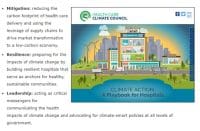Do you want to write professionally? As a former nurse peer reviewer, I found that not all nurses with advanced degrees write well. Are they smart and focused professionals? Yes. Do they conduct extraordinary research? Yes. Do they have solid experience in their nursing specialty? Yes.
However, not all professionals who have something significant to impart understand and demonstrate the finer nuances of the craft of writing. The following are a few issues I’ve found when reviewing professional drafts for publication:
- Too wordy: The nurse writer doesn’t have to throw everything there is to know about a topic into one submission. If the topic is your specialty, write two articles about the same subject from different perspectives, rather than create a data dump of information.
Suggestion:
Professional publications always recommend a word count. Write what you feel will cover the topic. Check your word count, and if it’s more than required, tighten your writing by deleting unnecessary words or sentences. Save essential deleted text into a word document for another article. If you delete text with a reference, readjust the numbering in the final draft.
Use colons and semicolons:
Break up long sentences with appropriate punctuation: use colons and semicolons for a series of related information rather than using comas, especially if you have short phrases, rather than single descriptive words.
- Avoid multiple source references for one fact. Fact checking becomes a challenge for reviewers to find several words lifted from multiple sources. Avoid five to six or more source references for one sentence. For example, write, “Smith1 and Wright2 agree that …”, and then add summary sentences to cover the additional references.
- Disorganized paragraphs: Detailed outlines aren’t necessary, but at least create a basic one and determine the major points you want to cover in your article. Then, as you self-edit, move paragraphs around to the appropriate sections. Reading your drafts out loud can help you hear similar information that you’ve already covered, or information that’s not essential to your theme.
- Boring introductory paragraph: Frequently, a hook is found later in an article. Some of the most boring writing I’ve read are scientific and professional submissions. Grab the reader’s interest with a catchy first few sentences. If you don’t, no matter how significant your research or experience is, you may lose your reader at the opening gate.
Suggestion:
Start with a brief patient scenario. If the publication doesn’t ask for a patient example, suggest a side bar. Patient examples trigger readers’ experiences. Write a few very brief introductory sentences versus starting with statistics:
Example:
“A 49-year-old man lay unconscious covered with dark-colored vomitous; his abdomen was bloated; palpated systolic pressure was 80. Stat blood counts showed a hemoglobin of 5g/dL, so he was typed and crossed for five units of blood. These signs and symptoms were not evident when he was first admitted to the ED. The triage nurse had assessed that the patient’s blood pressure was normal and his abdominal pain wasn’t critical. However, his blood pressure was actually too low, because he had a history of high blood pressure. Due to a lack of urgency, his status wasn’t addressed for another hour as he continued to bleed internally. What could the triage nurse have done differently?” Then continue to discuss topics of misdiagnosed abdominal bleed, sepsis, delayed ED assessments, etc.
- Too many consecutive sentences: Some writers include several sentences in a row from researched sources with no summary or bridging sentences in their own words. Incorporating quote after quote can lack fluency in conveying essential information about the topic. It’s like laying bricks without the mortar.
- Point of view and verb tense: Professional writing frequently includes inappropriate point of view and verb tense. The writer starts out with a first-person experience, but as the article progresses, point of view changes to second person (you) or third person (he, she, they). Reread or control/find these inconsistencies and edit. For scientific articles that incorporate experiments (human and nonhuman) and large amounts of data, avoid using first person.
Verb tenses:
Decide on verb tense and be consistent. Most articles are written in past tense unless you bring the article to the present in your conclusion (e.g., “Today, patients have more access to …”)
- Using compared with vs compared to1: Compared with is comparing similar things or elements; compared to compares similarities of elements that are dissimilar. Use compared with when presenting data related to clinical studies and data.
Several resources can help you in your writing endeavors. For example, read Cynthia Saver’s excellent article on proofreading. And consider signing up for writing courses and purchasing style guides (such as The Elements of Style by Strunk and White) and grammar books. The American Medical Writing Association has certification courses in medical writing, including an excellent grammar book.
And, finally—enjoy the process!
Lynda A. Stear, BA, RN is a writer from Longs, South Carolina.
Reference
1. Compared with Versus Compared to on GMAT. Experts Global. 2024. Accessed 04 Sep 2024: https://www.expertsglobal.com/compared-with-versus-compared-to-on-gmat.


















